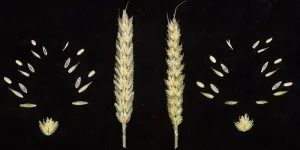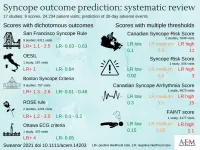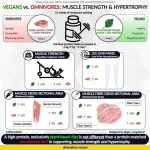Long search finds grain of hope in the glume
2021-05-19
(Press-News.org) Researchers have found the elusive genetic element controlling the elongated grains and glumes of a wheat variety identified by the renowned botanist Carl Linnaeus more than 250 years ago.
The findings relating to Polish wheat, Triticum polonicum, could translate into genetic improvements and productivity in the field.
Wheat, in bread, pasta, and other forms, is a vital energy and protein source for humans. Each individual grain is nestled within the glumes and other leaf-like organs called lemma and palea which affect the grain's final size, shape, and weight.
Characterised by Linnaeus in 1762, Polish wheat has long grains, glumes, and lemmas. Previous research showed that all these characteristics were controlled by one gene, but which one among wheat's complex genome has been unclear.
Researchers at the John Innes Centre used genomic, field-based, and biotechnological approaches to identify the responsible molecular component as VRT-A2, a member of the MADS-box family of transcription factors which act as genetic switches controlling protein synthesis.
Dr Nikolai Adamski, first author of the paper, said: "These results highlight how changes in expression of transcription factors can impact on important agronomic traits for major crops such as wheat. Our goal is to use this knowledge to help deliver genetic solutions to improve wheat productivity."
The team identified a small sequence rearrangement leading to misexpression of VRT-A2 in different tissues at several growth stages of wheat. This variation is responsible for the longer grains and floral organs found in Polish wheat.
Introducing the VRT-A2 version from Polish wheat into a UK bread wheat cultivar led to higher grain weight, size, and test weight (a measure of the density of the grain) but did not increase yield in UK environments.
Professor Cristobal Uauy, a group leader at the John Innes Centre, explained the broader significance of the research: "Every day, each person on the planet eats the grains of the equivalent of 50 wheat plants. With a growing demand for wheat, and against the backdrop of climate change, it is urgent that we increase wheat production sustainably. As part of this effort, understanding the genetic control of grain size and weight is extremely relevant to deliver genetic solutions."
The experiments also revealed a strong positive correlation between VRT-A2 expression levels and the magnitude of its effects on grain length and floral organ size.
In Polish wheat, the VRT-A2 gene carries a small rearrangement in its first intron - a genetic sequence that does not code for protein, but instead is important for regulating the gene's expression. The researchers suggest that this rearrangement was caused by errors in DNA repair following a double strand break.
Next the research team aim to understand how the VRT-A2 expression pattern is controlled by the sequence rearrangement in the first intron of the gene. They also plan to identify the downstream genes affected by VRT-A2 misexpression.
INFORMATION:
Ectopic expression of Triticum polonicum VRT-A2 underlies elongated glumes and grains in hexaploid wheat in a dosage-dependent manner appears in The Plant Cell.
[Attachments] See images for this press release:

ELSE PRESS RELEASES FROM THIS DATE:
2021-05-19
The sun delivers more energy to Earth in one hour than humanity consumes over an entire year. Scientists worldwide are searching for materials that can cost-effectively and efficiently capture this carbon-free energy and convert it into electricity.
Perovskites, a class of materials with a unique crystal structure, could overtake current technology for solar energy harvesting. They are cheaper than materials used in current solar cells, and they have demonstrated remarkable photovoltaic properties -- behavior that allows them to very efficiently convert sunlight into electricity.
Revealing the nature of perovskites at the atomic scale is critical to understanding their promising capabilities. ...
2021-05-19
Scientists, governments and corporations worldwide are racing against the clock to fight climate change, and part of the solution might be in our soil. By adding carbon from the atmosphere to depleted soil, farmers can both increase their yields and reduce emissions. A cover story in Chemical & Engineering News, the weekly newsmagazine of the American Chemical Society, explores what it would take to get this new practice off the ground.
Historically, agricultural soil has provided crops with the nutrients needed to grow, write Senior Editors Melody Bomgardner and Britt Erickson. Today, most soil is considered degraded, leading farmers to rely on fertilizer, irrigation and pesticides, all of which are costly. Scientific advancements ...
2021-05-19
Des Plaines, IL - The Canadian Syncope Risk Score (CSRS) is an accurate validated prediction score for emergency department patients with unexplained syncope. These are the results of a study titled Multivariable risk scores for predicting short-term outcomes for emergency department patients with unexplained syncope: A systematic review, to be published in the May issue of Academic Emergency Medicine (AEM) journal, peer-reviewed journal of the Society for Academic Emergency Medicine (SAEM).
Syncope is a common presentation to an emergency department, with patients at risk of experiencing an adverse event within 30 days. Without a standardized risk stratification system of patients, there will be health care ...
2021-05-19
Protein intake is more important than protein source if the goal is to gain muscle strength and mass. This is the key finding of a study that compared the effects of strength training in volunteers with a vegan or omnivorous diet, both with protein content considered adequate.
In the study, which was conducted by researchers at the University of São Paulo (USP) in Brazil, 38 healthy young adults, half of whom were vegans and half omnivores, were monitored for 12 weeks. In addition to performing exercises to increase muscle strength and mass, the volunteers followed either a mixed diet with both ...
2021-05-19
Artificial intelligence is providing new opportunities in a range of fields, from business to industrial design to entertainment. But how about civil engineering and city planning? How might machine- and deep-learning help us create safer, more sustainable, and resilient built environments?
A team of researchers from the NSF NHERI SimCenter, a computational modeling and simulation center for the natural hazards engineering community based at the University of California, Berkeley, have developed a suite of tools called BRAILS -- Building Recognition ...
2021-05-19
Quality of life relating to physical and mental health can be a key element in the treatment of obese adults. For this reason, interdisciplinary clinical measures including cognitive and behavioral therapy may produce more significant outcomes for these people, reducing not just weight but also symptoms of depression.
This is the main conclusion of a study conducted in Brazil by the Obesity Research Group at the Federal University of São Paulo (UNIFESP) in Santos, São Paulo state, and published in the journal Frontiers in Nutrition.
Considered one of the world’s major public health problems, obesity has ...
2021-05-19
EVANSTON, Ill. --- Self-affirmation, the practice of reflecting upon one's most important values, can aid Black medical students in reaching their residency goals. But conversely, it can lead to the perception that they are less qualified for a prestigious residency than their peers.
The pandemic has underscored the racial disparities in the quality of healthcare, a field in which Black Americans are vastly underrepresented as medical physicians.
New Northwestern University research aims to address the "leaky pipeline" preventing Black medical students from completing medical school to pursuing residencies in high-need and underrepresented areas.
Sylvia Perry, assistant professor of psychology in the Weinberg College of Arts and Sciences at Northwestern, is the ...
2021-05-19
COLUMBUS, Ohio - Though obesity in midlife is linked to an increased risk for Alzheimer's disease, new research suggests that a high body mass index later in life doesn't necessarily translate to greater chances of developing the brain disease.
In the study, researchers compared data from two groups of people who had been diagnosed with mild cognitive impairment - half whose disease progressed to Alzheimer's in 24 months and half whose condition did not worsen.
The researchers zeroed in on two risk factors: body mass index (BMI) and a cluster of ...
2021-05-19
BOSTON - In a major breakthrough, researchers at Massachusetts General Hospital (MGH) have discovered how amyloid beta--the neurotoxin believed to be at the root of Alzheimer's disease (AD)--forms in axons and related structures that connect neurons in the brain, where it causes the most damage. Their findings, published in Cell Reports, could serve as a guidepost for developing new therapies to prevent the onset of this devastating neurological disease.
Among his many contributions to research on AD, Rudolph Tanzi, PhD, vice chair of Neurology and co-director of the McCance Center for Brain Health at MGH, led a team ...
2021-05-19
The development of antibodies to the COVID-19 virus has been the great long-term hope of ending the pandemic. However, immune system turncoats are also major culprits in severe cases of COVID-19, Yale scientists report in the journal Nature.
These autoantibodies target and react with a person's tissues or organs similar to ones that cause autoimmune diseases such as lupus or rheumatoid arthritis. In COVID-19 cases they can attack healthy tissue in brain, blood vessels, platelets, liver, and the gastrointestinal tract, researchers report. The more autoantibodies detected, the greater the disease severity experienced ...
LAST 30 PRESS RELEASES:
[Press-News.org] Long search finds grain of hope in the glume





